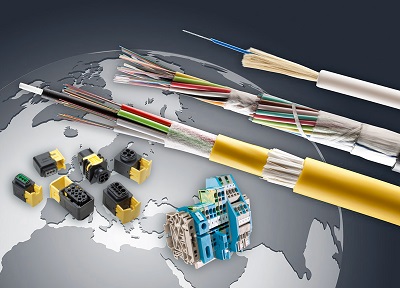On the occasion of this year's International Trade Fair for Plastics Processing (Fakuma), BASF is showcasing on its virtual platform two new high-performance plastics, Ultradur® B 4440 and Ultramid® B3U42G6, adding innovations in the field of flame-retardant (FR) and highly insulating polymers to its existing portfolio.
The two new high-performance plastics offer extremely high tracking resistance and excellent fire behavior combined with economical processing options. These two new products successfully combine material innovation and sustainability by avoiding the use of antimony and halogen compounds.
“The new Ultramid® and Ultradur® grades mean that we are able to offer our partners from key industries solutions for the increasing regulatory requirements in the areas of electrical systems and fire protection,” says Dr. Michael Roth, Product Developer at BASF Performance Materials. “The trend towards automation in production at our customers' plants also means that simple and stable manufacturing is essential. Ultradur® B 4440 and Ultramid® B3U42G6 make this possible,” explains Dr. Roth.

Small components and contact spacing
Ultradur® B 4440 and Ultramid® B3U42G6 allow optimum insulation properties and flame retardancy for thin walls. Both high-performance plastics attain the highest CTI rating of 600 volts and the V0 classification according to UL94 as highly flame-retardant materials at wall thicknesses from 0.4 mm. Both materials exhibit good suitability for injection moulding. The unreinforced Ultradur® B 4440, which can also be processed by extrusion, lays the foundations for increasingly complex components, and helps designers meet growing demands. These two products open up the possibility for entirely new miniaturised solutions, e.g., for connectors, terminal blocks, loose buffer tubes for fibre optical cables and filaments. Since Ultradur® absorbs minimal moisture, it also provides high dimensional stability.
In practice, flame-retardant Ultramid® and Ultradur® products are found in the construction industry, classical electronic and electrical applications and e-mobility. In e-mobility, the focus is shifting towards applications within vehicles, such as high-voltage plugs, charging infrastructure and battery modules and housings.
An additional benefit is the use of bright colours to differentiate. “Orange is the new gray,” the expert Dr. Michael Roth explains. But other colours are also possible. “The colour coding of individual parts makes for smoother and therefore faster production and assembly.” Precise laser marking is also possible through laser-sensitive colouring. The laser-transparent colouring options of Ultramid® extends the range of applications into housing assemblies.
“Besides the unreinforced Ultradur® B 4440 the currently developed glass fibre-reinforced Ultradur® products combine the high dimensional stability of polyester with distinctive high rigidity and toughness,” explains product developer Dr. Michael Roth. “This means that we can offer forward-looking materials for the electrical industry, construction and mobility sectors, combining technical progress with sustainability.”














